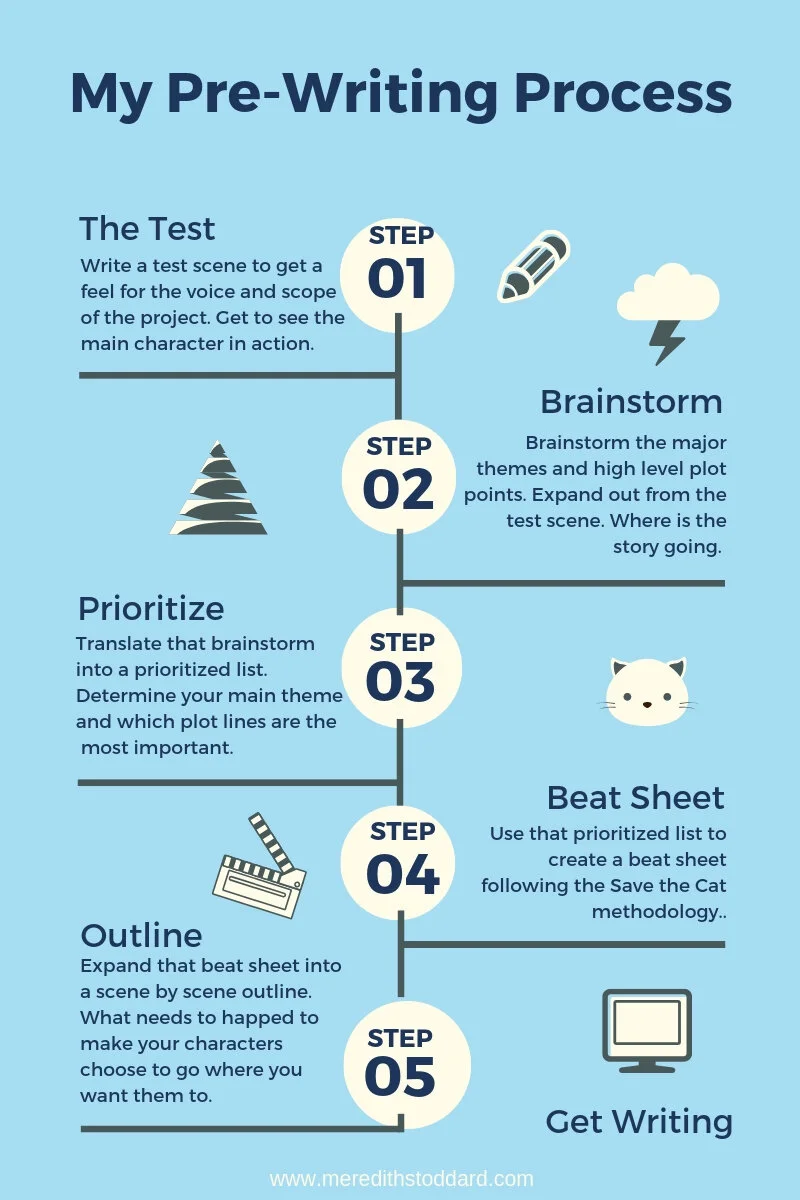I'm Plotting Something
If you’ve come here from the Getting Started post, then I’m super excited that you’re still reading. Only serious writers like to get this in the weeds about process, so congratulations. You’ve earned your Serious Writer Merit Badge. What qualifies me to give you this merit badge? Absolutely nothing except that I am super nerdy about the writing process and I like it when I meet my people. If you’re still reading after the last nerdy post, then you’re my people.
To recap, this series of posts is about my pre-writing process. The previous post was about the first three steps in my pre-writing routine. In this post we’re going to focus on Step 4, the Beat Sheet.
I’m not going to teach you how to do a beat sheet. That has already been covered by more experienced and successful writers than me. I will however refer you to where you can learn to do it from them, and talk about why I love this way of looking at your novel and how to structure it.
After I finished drafting the Haverhill project, I decided to get into a plotting frame of mind by reading a book that’s been on my TBR shelf for a while, Save the Cat Writes a Novel. If you’re not familiar with the Save the Cat plot structure, I highly recommend checking it out. It started as a guide for screenwriters to help them develop successful screenplays. The method focuses mainly around something called a Beat Sheet. The idea is that to keep your story moving and following an arc that will keep readers turning pages, you should focus on a set series of story beats.
Now, you might be saying, “But Meredith, that sounds awfully formulaic.” I hear you, but this isn’t about WHAT those key plot points are so much WHEN they should fall in your story. There is an expected rhythm and crescendo to story telling that hooks audiences and keeps them reading through the end. Some writers do this instinctively., some just spew out their draft and then mold the story into a compelling arc during the revision process. I prefer to at least map it out before I start writing. This gives a framework for us to articulate that story.
Yes, it’s a bit vague toward the bottom because spoilers.
It’s sort of like therapy. You go in with a jumble of emotions, and your therapist (hopefully) asks the right questions to help you make sense of that jumble and move forward. The great thing about Save the Cat is that as a structure it gives us a framework that melds the writer’s story idea with the audience/reader experience. How do we as writers get our readers to go on the emotional journey that we want our characters to go on? This is where some writer's can slip up. We sometimes become so focused on our idea, or a particular character that we love that we forget that we need to bring the readers along with us on the journey. Save the Cat finds that happy medium between exploring the story in your head and finding a way to make it relevant and entertaining for readers.
I found these questions and framework so inspiring, that I didn’t just outline book 4, but I went back and wrote beat sheets for Books 1-3, and even created a multi-level beat sheet for the whole series, and the rest of the books. There is a helpful chapter in the book about writing Beat Sheets for series writers too. I won’t show you that spreadsheet, because spoilers, But the structure looks something like this infographic.
I’ve been telling reader/friends for a while that I would like to write nine books in the series, which if you’ve read Cauldron or Thrice to Thine should make sense. But until this I only had vague sketches about how the five books to come after Book 4 would play out. I knew where the series was going and who some of the chief characters would be, but I wasn’t sure how I was going to get it there. Creating these Beat Sheets had really helped me to map out where the next books are going. I’m super excited and energized.
Next time I’ll talk about turning that beat sheet into a scene by scene outline.




